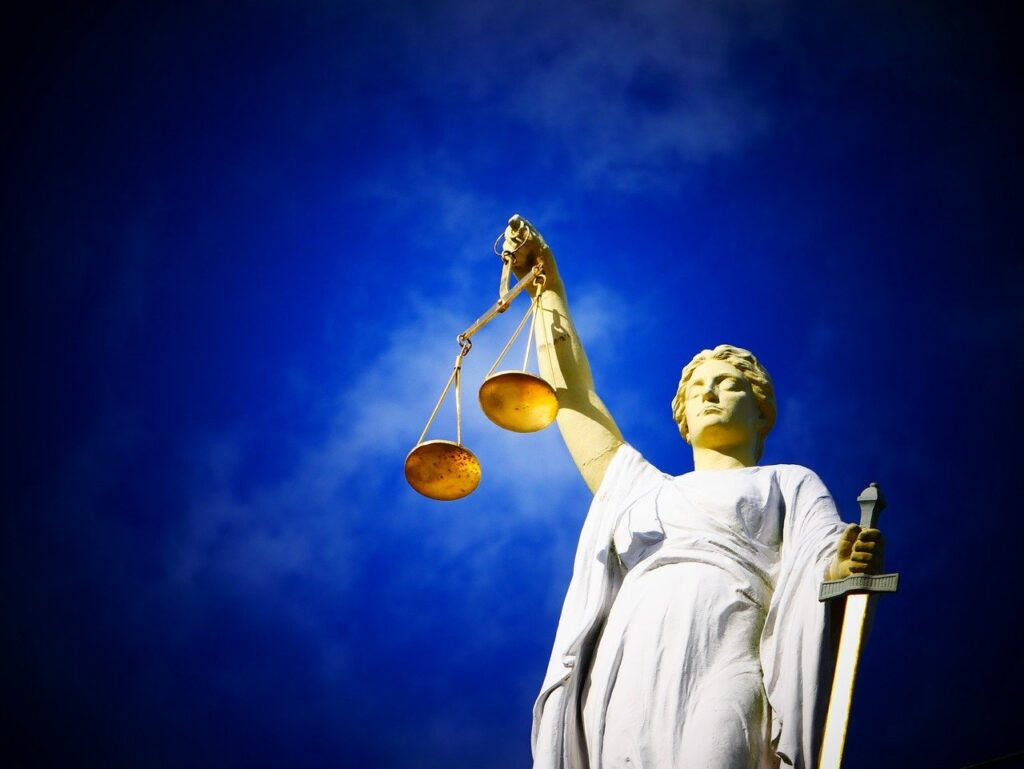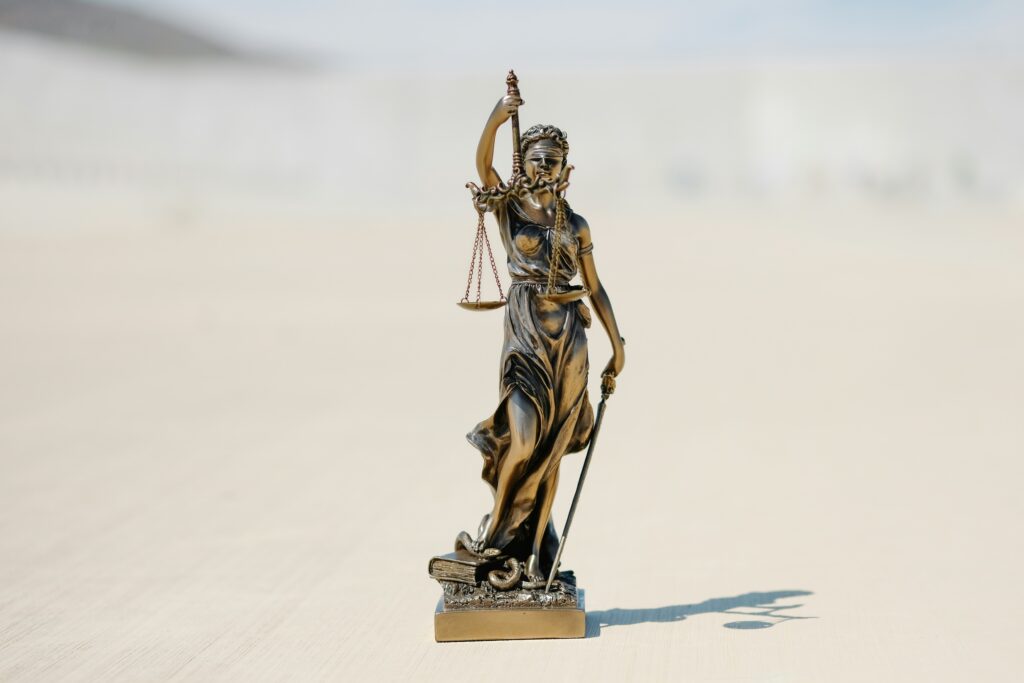Published on: 28th October 2025
Authored by: Aditi Arora
University of Petroleum and Energy Studies, Dehradun
Secularism, the theory of separation of the organs of the State and religious institutions, is one of the pillar of India’s constitutional democracy. The members of the Constituent Assembly had dreamt of India as a polity of many, in which the State would be equally distant and neutral to all religions, taking neither side nor intervening randomly in matters of religion, except to the extent necessary for the reason of preserving public order, morality, and health within constitutional bounds.
The Preamble to the Indian Constitution, after the 42nd Constitutional Amendment Act, 1976, categorically states the Republic to be “Secular,” reiterating the promise to maintain religious neutrality and ensure freedom of conscience to everyone. In addition, the Fundamental Rights under Part III , specifically Articles 14, 15, 25 to 28 , reflect the secular nature of the State by ensuring equality before law, forbidding discrimination based on religion, and ensuring religious freedoms.
Externally, instances of terrorist attacks like the Pahalgam attack on a particular religious group show how religious identities are being manipulated by extremist forces, thus weakening the secular ethos.
India’s experience with the idea of secularism goes back much earlier than its formal independence. The Indian subcontinent has, for centuries, been an intersection of various religious traditions, Hinduism, Islam, Christianity, Sikhism, Buddhism, Jainism, Zoroastrianism, and others practiced by its people in some degree of coexistence, assimilation, and at times conflict.
As people fought for their freedom, iconic leaders such as Mahatma Gandhi preached Sarva Dharma Sambhava which was even respect for every religion, and Jawaharlal Nehru unequivocally proposed a notion of the State that would neither be atheistic nor religiously biased. They believed that their philosophy would guide the State towards not affiliating with or distinguishing against any particular religion and build a secular civil space while facilitating religious freedom to practice at individual levels.
The devastating event of the Partition of 1947, with its prominent and extensive communal violence and the creation of Pakistan on explicitly religious grounds, primarily influenced the strategy of the constituent assembly. Recognizing the perilous potential of communal politics, the Constitution-makers, headed by the likes of Dr. B.R. Ambedkar, consciously choose a model of secularism that would secure religious freedom and simultaneously mandate the State to rule out religious domination and discrimination.
Interestingly, even though the secular spirit was firmly rooted in the constitutional structure right from the beginning in the guise of Fundamental Rights and Directive Principles the term “secular” as such could not be found in the original constitution of the country.
It was not until the 42nd Constitutional Amendment Act, 1976, enacted in the Emergency years, that the Preamble itself was changed to formally declare India to be a “Sovereign, Socialist, Secular, Democratic Republic.” The amendment, though in the larger picture contentious, went to enshrine what had been a very fundamental, though unstated, characteristic of the Indian State. The judiciary itself went on in subsequent pronouncements like in Kesavananda Bharati v. State of Kerala (1973) and S.R. Bommai v. Union of India (1994) to restate that secularism is part of the basic structure of the Constitution, and thus beyond the scope of regular legislative amendment.
Article 14 ensures equality before the law and equal protection of the laws for all citizens in a manner such that the State shall not give preference or discriminate against any citizen on the basis of religion. This is complemented by Article 15, which expressly prohibits the State from discriminating against any citizen on the basis of religion, race, caste, sex, or place of birth alone, reaffirming once again the secular ethos in the context of public employment and civic rights.
The Constitution also promotes religious freedom under Articles 25 to 28. Article 25 ensures to all citizens the freedom of conscience and the right to freely profess, practice, and propagate religion, subject only to public order, morality, and health concerns. Article 26 grants religious denominations the right to manage their affairs regarding religion, and Article 27 prohibits compulsory payment of taxes for promotion or support of any particular religion. Article 28 restricts religious teaching in schools run wholly on State funds, thereby ensuring that State financial assistance is not extended to the spread of religious ideologies.
In addition, Article 44, one of the Directive Principles of State Policy, requires the State to make a sincere effort to create a Uniform Civil Code (UCC) for the whole area of India. While non-justiciable, the article is an expression of the constitutional ideal of treating all citizens equally under one uniform code of secular civil laws regardless of their faith in religion, thus promoting national integration and consolidating the secular character of the polity.
In spite of the strong constitutional protections and the repeated reaffirmation by the judiciary of secularism as a part of the basic structure doctrine, India saw some serious violations of its secular promise, revealing the frailty of religious tolerance in practice. The most infamous among them are the 1984 Anti-Sikh Riots that broke out after the assassination of Prime Minister Indira Gandhi by her Sikh bodyguards. The inability of the State to curb the mass killing and forced evacuation of thousands of Sikhs, and the political complicity signals, brutally violated Articles 14 and 21 of the Constitution, which protect the right to equality and protection of life.
But another turning point was the 1992 demolition of the Babri Masjid at Ayodhya by kar sevaks, masterminded by bands of extremists supporting the building of a Ram temple. The event, setting off communal riots across the country, was not just a failure of law and order but a deep violation of the State’s secular obligation under Articles 25 to 28. The destruction of a place of worship through political mobilization based on religious identity was a flagrant departure from the constitutional promise of religious liberty and State impartiality.
The 2002 Gujarat Riots, that followed the burning of the Godhra train, again revealed the vulnerabilities of the secular State. Mass violence, particularly against the Muslim community, raised serious issues about the collaboration of State machinery in their constitutional obligation. The Supreme Court of India, in subsequent proceedings , made the doctrine constant, that the State has a positive obligation to ensure the life and property of citizens irrespective of religion.
Over the past few years , selective implementation of citizenship laws (specifically, critiques of the Citizenship Amendment Act, 2019), and communalization of the electoral process have continued to erode India’s secular fabric. These incidents illustrate how religious majoritarianism and populist politics, if left unbothered , questioned the constitutional vision of equality, liberty, and fraternity.
In addition, the abuse of Section 295A of the Indian Penal Code, criminalizing acts of deliberate and malicious intent against religious feelings, has sometimes been used selectively, thus making a joke of the ideal of a religiously impartial State. The selective application of laws and political pathway given to religious extremists have sometimes led to the State’s inability to uphold an impartial, secular public order, as required by the Constitution.
Secularism is being put to test in modern-day India on a multi-dimensional plane by both local and foreign threats on a scale to test the resilience of constitutional values to the limit. Cases like the July 2023 Pahalgam terrorist attack in Kashmir on Hindu pilgrims during the Amarnath Yatra only serve to show how religious identities are systematically exploited by radical elements to generate communal tensions. Both indigenousand foreign terror outfits use religious fault lines to promote separatist agendas and test India’s secular and majoritarianism ethos in not a pleasing way.
Domestically, secularism is also threatened internally by rising communal polarization, especially in election periods. The use of religious rhetoric, sectarian overtures, and hate speech by political players in pursuit of electoral gain undermines the original ideal of a non-committed State contemplated in the Constitution. Judicial censure, as expressed in Abhiram Singh v. C.D. Commachen (2017), cautioning against the abuse of religion in elections, underlines the judiciary’s recognition of this increasing the uneasiness . However, enforcement is not accurate.
In addition, politicization of religious festivals, selective celebration or prohibition of specific religious practices, and efforts to control religious conversions in the absence of an even-handed constitutional framework have also introduced an environment of suspicion and communal hostility. Selective State intervention or apparent bias in resolving religious disputes further widens divisions and disrupts the rule of equal treatment of all religions.
The maintenance of secularism in India largely depends on a series of institutional processes that reinforce constitutional ideals, in spite of the presence of certain systemic weaknesses in undermining its practical implementation. Of the strongest pillars of support for secularism is the judiciary, in particular the Supreme Court of India, that through landmark dicta such as S.R. Bommai v. Union of India (1994), has firmly established that secularism is an integral part of the basic structure of the Constitution and thereby shields it from abolition even through constitutional amendments under Article 368. The Court has continued to reaffirm that governments of States acting against secularism can be removed under Article 356, emphasizing the worth of religious neutrality in government.
Along with emerging secularism, the function of the Election Commission of India (ECI) also serves to advance it. Through the imposition of the Model Code of Conduct, the ECI prohibits political parties and contestants from seeking votes on the grounds of caste, religion, or communal sentiments. Judicial reinforcement, as in Abhiram Singh v. C.D. Commachen (2017), has upheld that vote-seeking in the name of religion is a corrupt practice under the Representation of the People Act, 1951, thereby advancing the institutional safeguards against communalization of politics.
An equally important role is played by independent media organizations and civil society organizations, who act as custodians of secular values, as vigilant watchdogs against their abuse. Investigative journalism, public interest litigation (PILs), campaigning, and social movements have often exposed instances of communal violence, discrimination, and State failure, thus mobilizing public opinion and keeping the State on its toes.
But even with these protections, some internal mechanisms have undermined the secular system at the same time. Political misuse of religion continues to be a widespread problem, with most political parties mobilizing people along communal lines, openly, thus undermining constitutional norms and further polarizing society.
In addition, the emergence of majoritarian nationalism a theoretical framework which attempts to blend with the national identity with the religious identity of the majority group challenges the secular exemption seen by the Constitution in a direct manner. This change in ideology excluding minority groups, shortening the pluralistic nature of the Republic, and perverts the constitutional vision of unity in diversity into a homogenized, exclusionary form of nationalism.
India’s pluralist tradition, based on centuries of coexistence of diverse religious, linguistic, and cultural groups, calls for a lasting commitment to secularism. Indian secularism is not constitutional ritual alone; it is a social necessity for the sustenance of national unity, integrity, and democratic health. While the Constitution and institutional machinery provide strong legal guarantees, the provisions of secularism depends on the collective conscience of the polity, the maturity of political leadership, and the activism of civil society.
The ever growing threats of religious polarisation, majoritarianism, and extremist violence reinforce the need for reaffirmation of secular values through active governance, neutral law enforcement, and public debate across the board. As the framers of the Constitution, above all through the guarantees under Articles 14, 15, and 25 to 28, imagined, India’s future as a fair and equal republic can be ensured only by strictly fighting biasness , protecting minority rights, and fostering interfaith tolerance. In the process, secularism cannot be an inspirational ideal alone but must be translated into a living reality, which is an intrinsic part of the nation’s legal, political, and social texture.
Reference(s):
1. Constitutional Provisions
- India Const. pmbl.
- India Const. art. 14.
- India Const. art. 15.
- India Const. arts. 25–28.
- India Const. art. 44.
2. Amendments
- The Constitution (Forty-Second Amendment) Act, 1976 (India).
3. Cases
- Kesavananda Bharati v. State of Kerala, AIR 1973 SC 1461; (1973) 4 SCC 225 (India).
- R. Bommai v. Union of India, (1994) 3 S.C.C. 1 (India).
- Abhiram Singh v. C.D. Commachen, (1996) 3 S.C.C. 665; (1996) 4 J.T. 194 (India).
4. Statutes
- Representation of the People Act, No. 43 of 1951, Acts of Parliament, 1951 (India).
- Indian Penal Code, No. 45 of 1860, § 295A (India).
Historical Events
- 1984 Anti-Sikh Riots — See generally Report of the Justice Ranganath Misra Commission of Inquiry (1986) (India).
- 1992 Babri Masjid Demolition — See Liberhan Ayodhya Commission of Inquiry Report (2009) (India).
- 2002 Gujarat Riots — See generally Concerned Citizens Tribunal: Crime Against Humanity, An Inquiry into the Carnage in Gujarat (2002).




